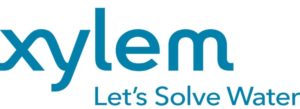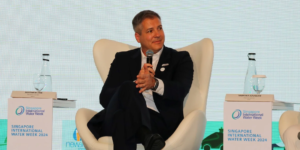Richmond Utility Uses Real-Time Analytics for Plan to Reduce Combined Sewer Overflows

Richmond Utility Uses Real-Time Analytics for Plan to Reduce Combined Sewer Overflows (Image source: Xylem Inc.)
For decades, Richmond’s Department of Public Utilities has been working to reduce combined sewer overflows, when untreated or partially treated stormwater and wastewater are discharged into the James River. Despite making significant improvements, factors such as an increased number of severe weather events contribute to the city still experiencing between one and three billion gallons of overflow each year.
Creating a short-term plan for infrastructure projects
In 2018, as part of its continuous work to reach water quality goals set by Virginia’s Department of Environmental Quality, Richmond partnered with Xylem to install a series of real-time sensors across its sewer network.
Richmond had historically relied on a static hydraulic model to identify system overflows. This method has limited accuracy because it does not consider critical factors that can impact the wastewater system, such as population shifts, rainfall disparity across the city, and system upgrades. With the real-time sensors from Xylem, the city increased visibility into these factors and of its combined sewer system.
In 2020, the Virginia General Assembly mandated that Richmond would need to reduce CSOs to meet water quality standards by 2035.
The mandate required the creation of an Interim Plan, including short-term projects that could be started within one year of the plan’s submission. The projects needed to result in quantifiable, positive improvements to both operational costs and overall water quality.
Analyzing data with a decision support system
The solution involved combining the utility’s data into a centralized, user-friendly interface to clearly visualize and analyze the operations of its network. With Xylem Vue powered by GoAigua's SSO/CSO Prediction and Prevention applications, part of the Xylem Vue digital portfolio, Richmond got a real-time visualization and decision support system.
Data was initially aggregated from 34 sensors within the system (this has since grown to 99 for improved granularity) – including flow meters, level sensors, and rain gauges. Xylem worked alongside utility staff to guide the analysis and provide a clearer understanding of how the system was operating.
By combining data and decision science with industry-leading water expertise, Richmond was able to identify and evaluate efficient, cost-effective projects to help solve its CSO challenges. At the same time, Xylem’s hydroinformatics engineering team reviewed network data from historical storms to determine which assets could be upgraded to further increase capture.
“We have been very impressed with Xylem, not only their understanding of the technology but their team’s responsiveness and collaborative approach,” said Pat Bradley, Deputy Director, City of Richmond Department of Public Utilities.
Identifying infrastructure projects to meet requirements
With the new solution, Richmond can now measure the real-time response of its sewer system with current weather conditions as well as identify when an overflow occurred and how much volume was discharged. The collected data is also used to regularly update the city's existing hydrologic and hydraulic model for accuracy.
Based on the data, 18 potential projects were identified to reduce CSO overflow across the city. Xylem then performed advanced modeling work, running simulations for each project to determine which would have the largest impact.
These results were combined with cost evaluations and additional project-specific community, environmental, and operational benefits. Based on these evaluations, the initial list was narrowed down to a final group of ten projects, which were included in the city’s Interim Plan to meet the requirements of the legislation.
Reducing CSOs by an estimated 182 million gallons
The projects identified by SSO/CSO Prediction and Prevention are expected to reduce approximately 182 million gallons of annual CSO volume, with an average mitigation cost of only $0.18 per gallon – a more than 200% decrease from previous CSO reduction projects.
Richmond is also leveraging the solution to provide new levels of transparency to its customers and the community. Xylem developed a publicly accessible online map powered by the system’s real-time data, which shows when and where CSOs are happening. This intelligence helps residents stay alert to areas of the river that have experienced overflows. It also provides Richmond with critical information about how rainfall impacts different sections of their network so they can manage it more effectively.
Together with Xylem, Richmond established real-time network visibility across their sewer system to predict flows, optimize capacity, and enable more accurate, data-driven decision making. With an actionable and defensible plan in place, the city avoided costly and unnecessary new infrastructure and is now on the path to regulatory compliance and achieving transformative outcomes for both the utility and the community it serves.
Source: Xylem Inc.






